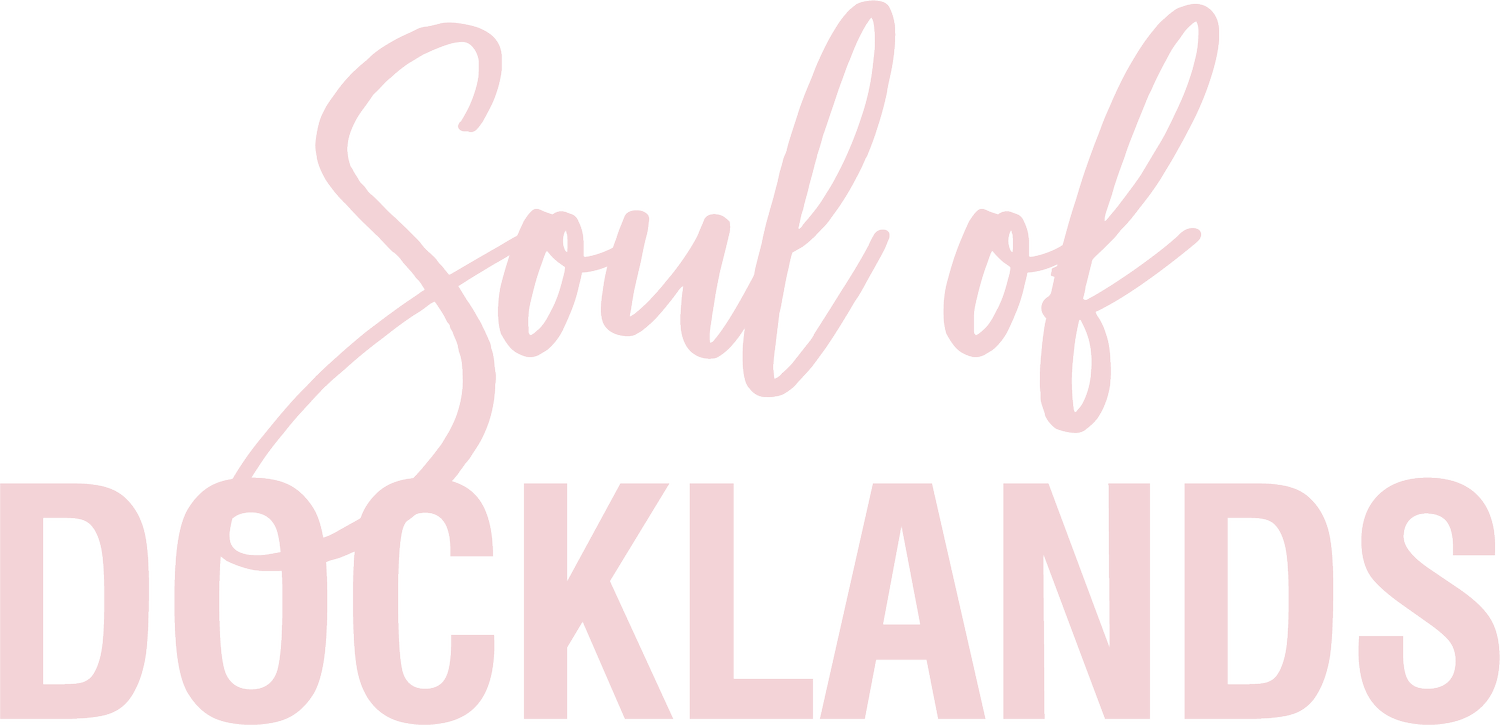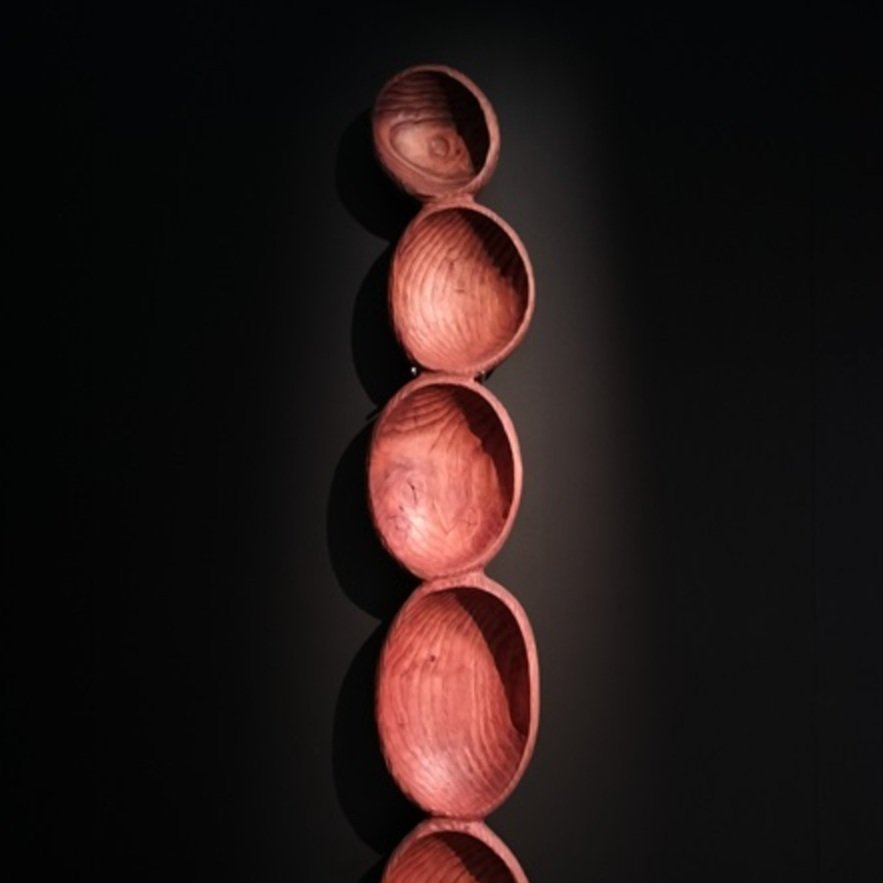"There is a meaning in those forms that is worth pursuing"
BUSINESS OWNER, ARTIST & SCULPTOR
Lucas Guilbert, originally from Montreal, Quebec, has lived in Melbourne for 14 to 15 years. He began sculpting as a lightweight hobby while traveling, later committing to it seriously about seven years ago. The COVID-19 pandemic provided him with time to create and prompted him to seek opportunities to showcase his work.
Invited by the Renew Australia project, he established his studio in Docklands about a year ago. Subsequently, he joined a pilot project with MAB, progressively improving both his space and his art. Lucas’s journey underscores the importance of seizing opportunities and adapting to new environments for artistic growth.
Who is Lucas?
-
I’m Quebecois, originally from Montreal, and have been living here in Melbourne for about 14, or 15 years.
I began whittling and carving as a hobby while I was travelling. You see, backpackers travel light and have to carry their hobbies with them; one will have a camera, another a surfboard, and someone else knitting. For me, it started as photography early on, but eventually, I bought a couple of carving knives and the hobby stuck with me. I always thought that one day, when I had somewhere stable, I’d make big sculptures.
I really started sculpting in earnest maybe seven years ago. To begin with, I was mostly keeping it for myself but after COVID, I started thinking that once I have enough sculptures in my house, I’ll do something about it. COVID was good in some ways because it gave everyone extra time for art practises and so on. I finished quite a few pieces during that time, and after a few failed attempts at applying for arts programs, I took the bull by the horns and rented a space.
During that time, the Renew Australia project contacted me and said they had a space available as part of their project. I had never thought about having my studio in Docklands, but I took a look at the space and it was too good to say no. Sometimes the door opens and you just have to jump in.
That was around a year ago. I moved all my sculpture stuff here and since Renew finished I’ve been part of a pilot project with MAB. There’s been lots of goodwill involved, and I’ve been progressively improving the space and my work.
-
My studio is in Escala, so I’m close to the water. I go and have my lunch there. I have a six-year-old who really likes fishing, so we go fishing on New Quay Promenade. We’re yet to catch anything, but then we haven’t exactly tried hard. It’s more about being in the open air by the water.
I’ve been exploring and really like walking down around Ron Barassi Snr Park. I find it quite stimulating because it’s kind of at the border of the industrial and the urban but still has wildlife, especially native bird life. I’m attracted to those fringes.
When I first moved into this space it was all about the architecture, but then I started meeting some of the locals and I realised there’s this community here. When I’m in my studio early, I can see all the little kids going to school. Sometimes I’m wearing my astronaut outfit, sending sparks and dust working on a piece, and they will all have their faces glued to the window.
That’s part of how I designed the studio. There’s an area that’s more of a gallery, I’ll leave the lights on at night for a few hours so people driving past can see and it’s appealing. Then there’s my workshop, where people walking past can see inside when I’m working. I feel like that’s something people never get to see an artist doing.
The artistic process for me is quite chaotic, and there’s an aspect of performance in what I do that I actually dream about. I’ve been fantasising about the idea of setting up a temporary studio in a public space. For example, when they redo the docks and there are all these beautiful timber pylons, scores of them, left in the water, I’d love to have 7 or 11 of them and turn them into sculptures. I’d set up a container with clear sides onsite as a studio so people can wander past and watch the performance and get a more intimate look at the artistic process. It can be very antisocial, what I do.
It’s noisy, it’s dusty, it’s dangerous, but it’s where the art happens. I think that if someone can watch that for a bit then it might inspire them individually and build on that sense of shared experience in shared space that makes a community.
-
It’s a bit like a motion forward for me, a quest. It’s a thirst that sculpture, in part, helps quench.
I find that there’s a commonality in what I find beautiful and harmonious, that seems to be in nature everywhere and in all the artistic forms of the different cultures that I have encountered, even old petroglyphs and paintings that were done thousands of years ago. I mean, I see what you saw when you drew that! So, for me, there’s a bit of a quest for the Universal, something that can be hard to define, but sometimes it pops its head through and I’m like, “Oh yeah, that’s it there!”
It’s the Platonic form, yes, the ideal. So, I’m not espousing any -isms, but I do feel like there are forms and I can understand the form that preceded each. Take evolution for example; I understand how you can have fish in the water and cats on the land that have the same patterns. That may be a coincidence, but it also looks like there was a plan beforehand. It doesn’t matter whether it’s true or my perception, the model is useful to achieve a certain goal. For me, there is a meaning in those forms that is worth pursuing, and I feel part of my intention is that, consciously or not, it affects people in their lives. The nature of wood and the fact that it holds a record of all these events that happened to the tree in the grain of the timber, there’s a balance between my imposing form and the form that’s already in the wood, I feel like that has a bit of a shamanic effect on someone who has one of my pieces in their house.
-
As I said before, what I do is not super social, but occasionally I do have people dropping in.
One day, this guy who just moved into one of the apartments near here came over in quite a frenzy saying, “Do you want some wood? I’ve got these planks, they don’t fit in my new place and we’re downsizing. We’ll bring it over, I’ll give it to you free.” Then he pulls up with this big removalist truck and his two sons and they pull out these enormous slabs of timber.
It’s nice to have the place here, it’s a good location. I’ll have collectors or clients interested in seeing what I’ve been working on and it’s close to the city, it takes them about 5 minutes to drive here.
I don't get why people think that. Docklands is not as far as people seem to think it is, especially with the accessibility via public transport. It's so easy.
-
I hadn’t realised that the City of Melbourne itself was so open to the Bay. I had seen the way it is in Port Melbourne, St. Kilda, and all those bayside suburbs, but this is pretty much the CBD. From here, I walk a hundred metres and I’m by the water, it’s windy and you can see the storms rolling in and the sunsets are amazing. So, I guess a lot for me has been the fact that nature is so close.
I never thought that in the apartments here you’d have the best views up there, but you see the city and sunrises on one side and on the other the bay and the sunsets.
-
My main engagement is having the door open and music playing and people can come in if they like, or watch me do my little show in here. I know people at the local cafe, and the people in the premises next to me that are chatty, but I don’t engage all that much because this is my workspace.
Then again there are the people who are travelling or on holiday here, and they’re the most interested in talking. When I’m by the waterside I’ll often have a conversation with a tourist. When I was fishing with my son, a tourist from China came and sat with us. Not a word of English, but we had this beautiful conversation in neither English nor Chinese about fishing.
I do have a project coming up to use the windows in a nearby space for a rotation of art exhibitions. It can be quite hard to find a place to show your work, and usually costs to join a group exhibition. I’d like to make the space free and open it to local and student artists to exhibit their works.
That’s the thing with having these hotels around here; you don’t know who’s around. There are some people who come there from overseas who might be collectors and see the works of this bright young student from Melbourne and think, “I love what she does, I’ll buy a couple of her pieces,” and then that’s it.
-
My favourite thing to do for lunch is to the local IGA or the Asian grocer next door, get a little snack, and sit by the water looking at the city and the wind and the boats. For me, there’s an element of contemplation in that, it’s one of the things that first attracted me to take up fishing as well.
Normally I’d be in a studio in an industrial estate, with a factory next to me. Not very inspiring, and around most of them there would be nowhere nice to go. Here I can walk down by the harbour, or around Barassi Park and get closer to nature.
My son likes to come here and do a little bit of carving. He thinks he’s super clever. He mostly likes it because the Asian grocer has lots of lollies he’s never bought, he loves going in and picking up random things. Red bean ice cream is our new favourite now. Who would have known?
-
Well, Ron Barassi Snr Park is not exactly a secret, but I do like that kind of landscaping and it is one of our favourite destinations when I come with the little one. It’s a great space and you’re free to explore most of the area around it. A lot of parks are quite regimented, but this one is much more open, which means that when we go with kids, they’re more imaginative. They’ll pick up and play with sticks and gum nuts or banksia nuts.
There’s a bit of a wild edge to the park, with all the birdlife around, it makes you wonder how diverse this part of the world would have been not so long ago. If you can see through the concrete, you can kind of imagine the rushes and the little meadows of wet-loving trees and the animals and the people that have been here just under the surface.
-
I think just that it’s somewhere where people live. You know, it’s right next to the city, it feels like the central business district, but it’s not. There’s a school, there are parks, people running around on rollerblades or walking their dogs and. It’s Paradise City for them, you know?
I’d like to see the natural parts of Docklands be nurtured and take a more prominent position in the area. There is more diversity here than people realise, and I think there’s something special in being close to that.
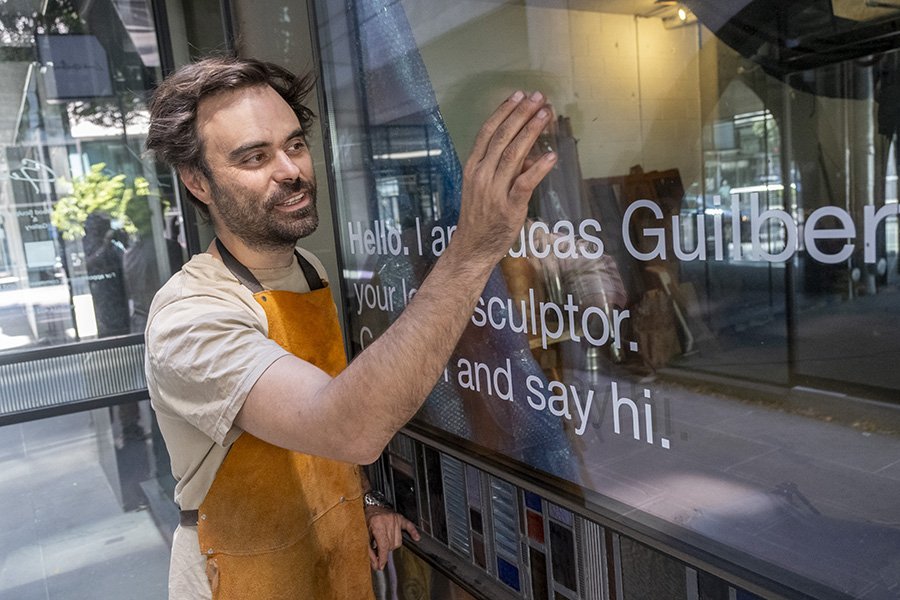



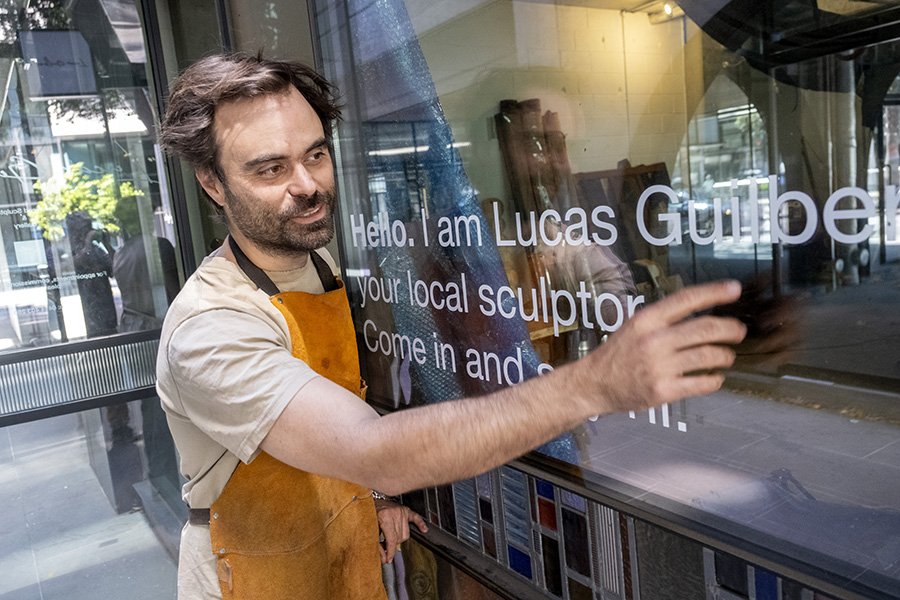
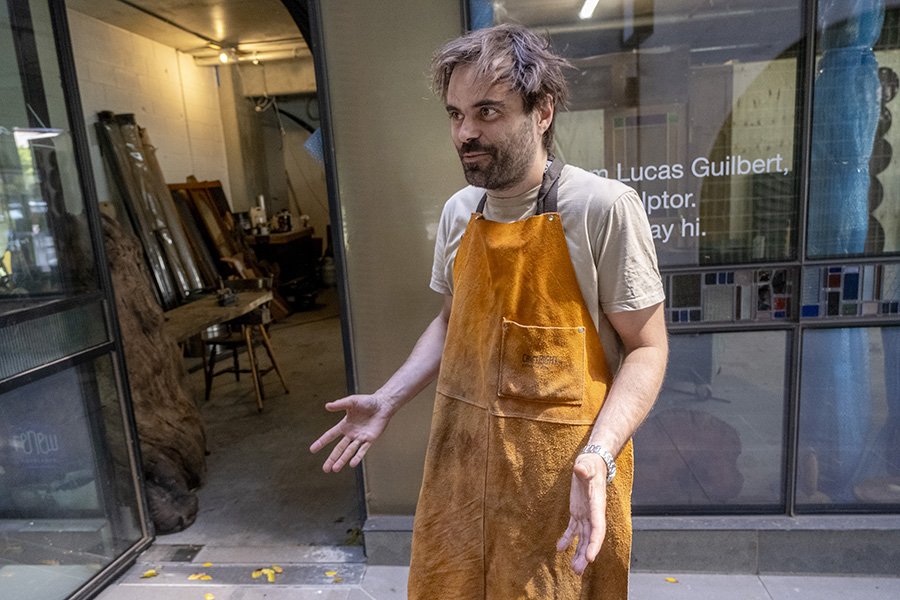
Lucas Guilbert
Click to learn more about Lucas, to get in touch and express interest in viewing his existing work, to discuss a commission, or to make an appointment to visit the gallery.
